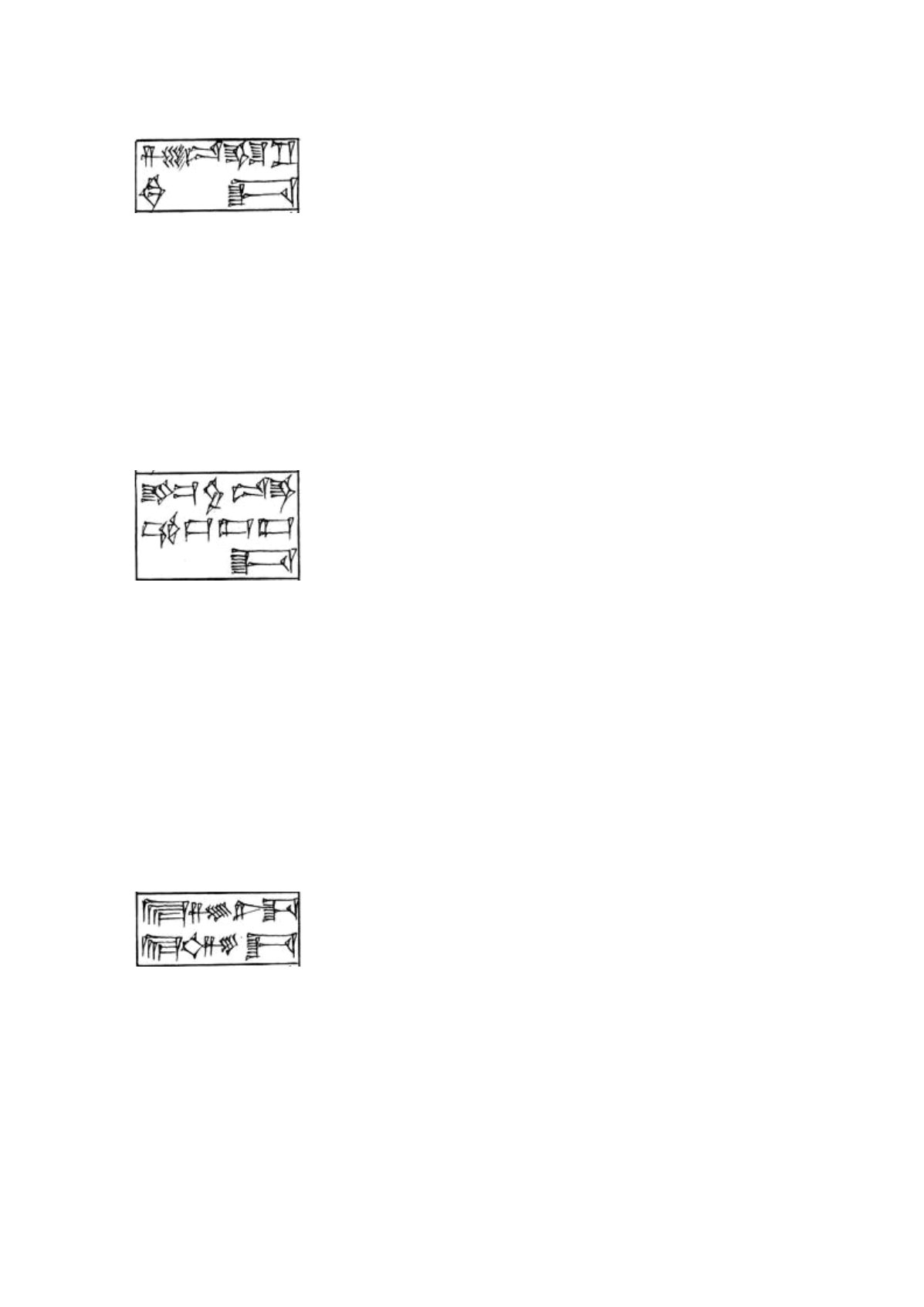

375
Gudea di Lagash – La costruzione del tempio di Ninjirsu - Cilindro B
B VI.11 – 944
[
zi
]
.du.e šu si sa
2
.da
zi.du.e šu si sa
2
.eda
Per guidare la mano del giusto,
zi.du:sostantivo composto, costituito da un aggettivo e da un verbo (GSG1.63): “a good person ('good' + 'to
walk')” (SL), “un brave homme” (PLS.156), “der Gerechte” (GSG1.29). Qui col caso locativo-
terminativo (GSG2.99, 145; si alterna col dativo: “del giusto” = “al giusto”)
šu si sa
2
.eda : infinito “dass geleitet werde” (GSG1.140), del verbo composto šu si…sa
2
“ to do things to
perfection; to see that all is right ('hand' + 'right; legal')” (SL); “redresser, rendre droit; atteindre à la
perfection” (PLS.121); si…sa
2
vale “to do something in the right way; to make straight; to put in order;
to tune (an instrument); to prepare, get ready;” (SL). Falkenstein traduce l’intero verso come “dass der
Gerechte geleitet werde” (GSG2.68n3). Il lungo periodo che qui inizia termina in B VI.23
B VI.12 – 945
erim
2
.du.e gu
2
jiš ja
2
.ja
2
.da
erim
2
.du.e gu
2
jiš ja
2
.ja
2
.eda
per porre il collo del malvagio alla gogna,
erim
2
.du : “der Böse” (GSG1.62); PSD2.160 lo cita s.v.
luNERUdu
(lu
2
-erim
2
[NE.RU].du) “enemy:
imbecile”; è costruito allo stesso modo del precedente
zi.due come esso posto in caso locativo-
terminativo (GSG2.99, 121); erim
2
[
NE.RU]“ennemi; mechant, mauvais, hostile” (PLS. 108); “enemy;
destruction; hostile, evil” (SL)
gu
2
jiš ja
2
.ja
2
.eda : “auf den Nacken das Holz legen = “(sich) unterwerfen” (GSG1.126); gu
2
“cou, nuque”
(PLS.58) dovrebbe essere in caso locativo (gu
2
.a) o in locativo terminativo (gu
2
.e); jiš è il paziente e
ja
2
.ja
2
.eda un infinito “dass unterworfen werde” (GSG1.131-132, 140); lett. “che al malvagio il legno sia
posto al collo”, o simili; il verbo, transitivo, è qui usato in senso passivo/intransitivo: “das Holz an den
Nacken gelegt werden = unterworfen werden” (GSG2.62). Falkenstein traduce l’intero verso come “dass
der Böse unterworfen werde” (GSG2.68)
B VI.13 – 946
e
2
gi.ne 2.da e
2
dug
3
.
ge.dae
2
gin.eda e
2
dug
3
.eda
per rendere saldo il tempio, per rendere piacevole il tempio,
gin.eda : infinito “dass das Haus gefestigt werde” (GSG1.139), del verbo gi(n), ge(n) : “to act justly; to
stabilize, strengthen; to confirm; to establish something as the property of someone (dative) (loanword
from Semitic, Akkadian
kânu
)” (SL); “être ferme; fixer; onvoyer; aller, venir” (PLS.66 s.v. jin);
“festmachen” (GSG2.60)
dug
3
.eda : infinito “dass das Haus schön gemacht werde” (GSG1.139), del verbo dug
3
(du
10
) [HI] “to enjoy;
to be/make enjoyable” (SL)
















